#Pomodoro clock
Explore tagged Tumblr posts
Text
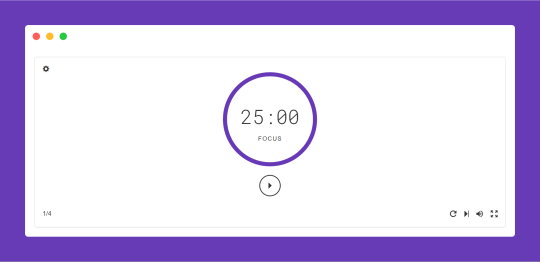
Pomodoro Timer is a simple and configurable web app to help you master the Pomodoro Technique. Stay focused and manage your time effectively with this Pomodoro Timer. It aims to provide a visually-pleasing and reliable way to track productivity
#Pomodoro Timer#Pomodoro Clock#Pomodoro Technique#Focuse Timer#free online tools#online tools#web tools#online web tools#free web tools#online tool#a.tools
0 notes
Text
Pomodoro Clock for Efficient Time Management – Pomonow
Keep track of your work intervals and breaks with Pomonow’s Pomodoro clock. Designed to help you manage your time using the Pomodoro Technique, our clock provides a simple yet effective way to stay on task and boost productivity. Pomonow’s Pomodoro clock is perfect for anyone who wants to manage their time efficiently and stay focused on their tasks, whether for work, study, or personal projects.
0 notes
Text
Pomodoro Focus: Enhance Your Concentration and Productivity with Timed Intervals
Enhance your focus with PomoNow, the ultimate Pomodoro focus tool designed to help you achieve more. By breaking your work into timed intervals, PomoNow uses the Pomodoro Technique to maintain your concentration and prevent burnout. Perfect for students, professionals, and anyone seeking to improve their productivity, PomoNow offers a sleek and intuitive interface that simplifies time management. Customize your work and break periods to fit your unique workflow, and track your progress with ease. Experience the benefits of focused work sessions and elevate your productivity with PomoNow, your trusted partner in achieving optimal focus.
0 notes
Text
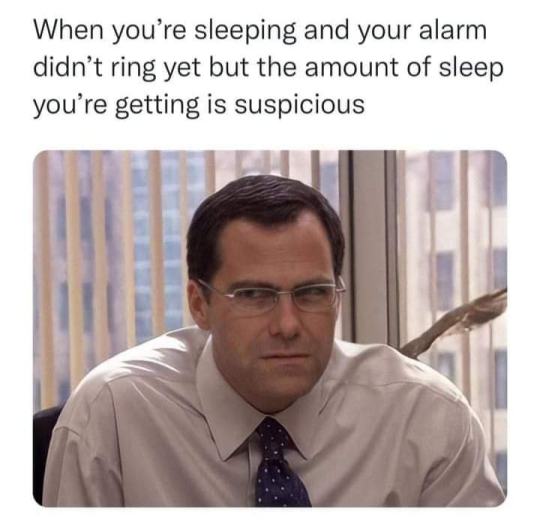

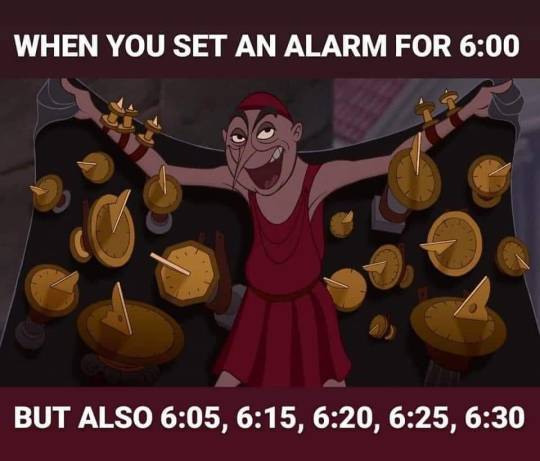
I set so many alarms and reminders.
Alarms to get up. Alarms to tell me to go to bed. Alarms to time my lunch break. Alarms to remind me I'm making tea. Calendar reminders to put the bins out and to pay bills. A timer to go off to make me start a task. A timer to make me stop a task.
And yet I am still able to snooze them all.
#neurodivergence#adult adhd#neurodiversity#adhd brain#pomodoro#task avoidance#task switching#get out of bed#get a planner#make a list#snooze button#alarm clock#neurodiverse stuff#neurodiversesquad#adhd#adhd memes#executive dysfunction#adhd things
303 notes
·
View notes
Text
youtube
1 note
·
View note
Text
how do chess clocks work? because i want an analog timer that ticks audibly while counting down to use for pomodoro purposes. the ticking is really important because every one second it reminds me that i am in a work period. silent timers arent working for me. the time i currently use lets you set an ambient noise during work or rest periods respectively nd it has a ticking option and i really like it
32 notes
·
View notes
Note
Wait do you have study tips… I’m going into my senior year as a uni-transfer and it’s sooo exhausting I’m struggling to focus + getting scared the closer I get to the finish line… womp womp
Oof, that is so real. Let me see if anything in my study roster can help. First, everyone is different and learns differently, so you should study by catering to your learning style, such as hands-on, auditory, etc. But these are some main things I've learned that can be adapted for and are generally great for most everyone.
Buckle up your seatbelts and grab a beverage; this is long.
Timers
Timers are so important! My favorite method was the Pomodoro Method, which was 25 minutes of work and a 5-minute break. You repeat that four times, then take a 15-30 minute break.
It helps to have an end goal, and more importantly, it allows your breaks to be calm because you don't have to worry about getting lost in your break and losing time. Because the timer is set!
However, I suggest not getting on your phone during this break. My best options that work for me are:
Reading a book
Getting a snack
Laying outside and lamenting of the world's woes to the trees
Having a pen and paper to do doodles
Crying
Finding someone in my house to talk to/seeing what others are up to
Falling onto the couch to lament my woes to the dog
Breathing exercises
Getting on your phone speeds up time and keeps your brain in a different mode; it makes it harder to get off and get back on. Ruins the whole study set up you have.
Timers are my best friend because I would stress over breaks, that I would get distracted, or I would spend my entire break looking at the clock to make sure it wasn't too long. I also had a great time with the 25/5 method because it was just long enough but also bite sized so I didn't feel overwhelmed.
Note Cards
Note cards are your friend! Use so many note cards. Scare people with your note card usage.
Note cards are helpful for a few reasons.
Writing. Physically writing things down engage more of your brain, you're more likely to remember!
Personal study. This can be so versatile for when and where you look over terms or ideas.
Friend Study. I loved going over flashcards myself until I felt pretty confident and then having someone go over them with me. The added human connection helps you enjoy your time more and not isolate, as well as not flippling them over too soon. It makes you realize maybe you didn't have them as memorized as you thought.
Versitility of note cards is great, you know you can just write all kinds of stuff and just paste them to the wall? 10/10, love to do it. This is a huge memorization thing, but paste it where you see it!
Write It On The Wall
On pasting note cards everywhere, if you are specifically memorizing passages of literature or conceptual ideas, write it down on your mirror. I had to memorize a poem and I pasted it on my mirror and had to say it before I got in the shower and after I brushed my teeth. You see it all the time, but add it into your routine of that place. If you put it on your door frame, say it before you leave the room/house. This is an underrated study habit that I use all the time, even outside of school.
Food: You Have Got to Eat!
Eat! Eat breakfast! Have a snack in between Breakfast and Lunch! Eat a full lunch! Have two more snacks before Dinner! Have a good Dinner! Eating is V i t a l.
Also knowing how your body reacts to foods. People are now calling this intuitive eating, but knowing what fuels your body is important. For example, I didn't ever drink coffee in the morning, I saved it for after lunch. I didn't know why then, but drinking coffee actually relaxed me; it also settles my stomach. So I waited until after lunch to settle my stomach and have a little "you made it to lunch!" treat. I would instead drink black tea in the morning and then green tea with a snack.
The moral of that story is that beverages are very important. Lots of water too! I suggest something with a straw because you can just keep it on the table and I would accidentally drink all 40oz without realizing simply because I was playing with the straw and was drinking at the same time.
Don't just eat sugar. I know everyone hates to hear it, but it does actually affect your mood and study ability. Sugar is for later, have it, eat it, love it, but not in the morning and not a lot. There are a few foods I would suggest for brain boosting:
Berries
Cheese (i fucking love cheese sticks bro they are 876754/10)
Eggs
Greek Yogurt (filling and great for your gut)
Smoothies with leafy greens (my mother was the Queen of smoothies at 7am every day that I used to get too and that shit helped so much in the morning I swear)
Vegtables! Everyone hates on them, but throw some seasoning, get a dip, and pair it with some meat. Make your own tiny charcuterie board if you need. Cook them, roast them, boil them. I don't care; just eat your veggies.
People often forgo body health when thinking of studying, but making sure your body is fueled and given proper nutrients is going to help you way more than any hyperspecific perfect study tip from some middle-aged so-called researcher in Winsconson. Just so you know, people can slip in studies that have no meaning and are a joke. Cross-check even your "scientific journals".
Place
For the love of god, do not do all of your work on your bed. Your bed is for breaks and sleeping, not studying. Your brain needs to differentiate place. Do it on your desk, your kitchen table, your floor, for all I care. Get out of your bed. Brush your hair and move. If it's a nice day, go outside. Don't you have an outside table? Get a blanket; picnic time.
If you are a library person, go to the library. If you aren't, stay at home. I personally did some of my best work in a busy tea shop on my campus because I was used to working with noise and people. The library is too quiet and still for me. Don't let people tell you the library is the only choice if you don't like it. Do it in your home, the public park, a coffee shop, or the Student Union during lunch hour if you have it. Or go to the library if that's best for you. Try different places! Mix it up! Go to all of them! Go to multiple places in one day! This is your life study at the dog park with no dog if you just wanna see some dogs, studying is not for the weak.
Treat studying as important as Don Quixote took Knighthood. You may look crazy, but you are free. More importantly, your brain is learning.
Hands-On Learning: It's Not Just For Preschool
I had this one class where our exams consisted of multiple choice and the dreaded essay. The professor would give us three different essay prompts and not tell us which one the exam would be on. She would only give us a paper that had a basic history essay outline on it. It was like russian roulette but more stressful. A full five page essay no notes, no nothing, just the ol' brain.
So what I did is I filled out every essay prompt according to the outline I knew we would have, printed it out, and spoke them all aloud while walking around the kitchen for hours. I would do a full: "Introduction, hook: the Egyptians believed the best thing you could do in your life was die".
Just writing and reading is not enough or, like, interesting. Make songs and do a dance routine while your own voice reads off memorization topics. (I have done a few voice notes, don't knock it till you try it). Make it fun and different when you can, it helps your interest, your ability to focus, and memorization. Don't think studying is just typing and reading it over on a screen. Sure, type out notes, but print them and walk around with them. Annotate your own notes. Make a seek and find with your terms and definitions. Create joy where you can; you'll have more fun and remember more. You are grown in college, take yourself on a field trip. It's your life. Find professors and ask them random questions, grill them, they love it just trust.
Reading: Annotation and Other Gifts Straight From God Himself
Annotation is a life saver, a game changer, literally have not once looked back a day in my life after annotating.
I've annotated many different ways, but I've found that for school, the best way to focus on speed and efficiency is with a pen and one singular highlighter. If you struggle with attention or distraction, I do not want to see you with an array of five highlighters for different topics. You, I, and Mary Mother of Jesus, know good and well you are going to get distracted with the colors and forget what you were doing and focus more on color coding than actually reading.
If it is a shorter article, first speed read the whole thing before even thinking of using stationary. And I mean speed read, finish it, and have no confidence on who, what, when, where, or why. You just need to become vaguely familiar. Then the second time you actually read it, and if it's a long text (40+ pages), just start with this, hold your pen while reading.
Circle words you don't know and immediately look up definition, write it down, and continue. Underline and arrow what you think are defining parts of the text. On the side, make sure to write the topic. If a character is getting murdered, write murder scene on the side. If a new theory is being discussed, write piaget - development on the side. You are annotating to look back too, not just write down. Think of your poor future self. What would they think if you just wrote down "wow" on the side? Wow what?
Vagueness is impractical. Be blunt and clear.
Use a highlighter to get those real important bits. Such as, if there is a sentence that is obviously some type of thesis or object statement, highlight it. Think about you going in blind in two weeks looking it over, and seeing highlight of a sentence that makes no sense without context. Ridiculous. Highlight things that give context, not things that need it. Those other fun sentences are for underlining with a pen.
If you are reading a chapter book for school, write a quick summary at the end of each chapter. And, if you really want to do something with some umph, write two to three questions you have over the chapter. Even if you don't really have any. Find some, make something up. The act of trying to think critically about a text allows you to remember it more. Make discussion questions if anything, keep them open ended if you want, create something to talk about. If you can do that, you understand it. Don't let me see you pulling a "why was the mom mad?" when it was clearly stated her son trashed the house. Be real. Write something interesting or not at all. Don't waste your time with that.
Organization
It doesn't really matter how you do this, it's different for every person ever on the face of the earth. But try and make yourself organized. Keep all your papers. Have a folder for each class. Keep a binder. Don't throw away things until the semester is over even if you don't think you need it, if the professor/teacher went to the trouble of printing it, keep it.
Note Taking
This is also a big one. Honestly, if you can, handwrite it. I've done typed notes, and it doesn't hit like handwritten notes. The cornell method is great.
A big one for me is if the professor provides PPTs before the lesson, print them out. Use the ppts to write your notes on. Why write the power point slide bullet points when that's already provided? You want to write down what the professor is saying. People always told me that but I had a hard time doing that without the context of the slides. So, I would print the slides out and write on them. If I didn't have them or the professor posted after, I would section my notes by labeling the slide number at the top. Works like a charm.
Colored notes. My favorite is a multicolored pen. One pen, four colors. Amazing work in pen creation. A big help for discussion-based classes is keeping color codes on notes by:
Teacher Said
Classmate Said
I said
Helps a ton. It feels silly at first, but this is one of those just wait till later tips that needs to marinate. Do it consistently, make it a habit, and it'll work wonders.
Conclusion
That's what I can think of off the top of my head, and my go to study things. I am just outing myself as a huge nerd and perfectionist with this essay of an answer.
I think always remembering why you are doing something is helpful. Look at your end goal. Sometimes, mine isn't anything but "I wanna be better than everyone else," and that's valid (I say about myself). But don't think you have to have some grand reason, but have one that is important to you specifically. Do you just want to have a degree? Perfect reason. Do you just want to learn about something? Perfect. Are you proving a point of some kind? Amazing. If you focus on the here and now, it will get overwhelming. Sometimes you gotta get out of your now bubble and stretch out. Give yourself perspective.
I hope at least one of these tips can help!
#asks#school#study tips#studying#womp womp indeed#i feel like that every day#maxed out hours is not fun chat#but you do your best and thats what you got
28 notes
·
View notes
Text
Why I hate the pomodoro method.
You’ve probably seen someone suggest the Pomodoro method before— you do short sprints (typically 25 mins) followed up by a quick break (typically 5 mins).
I don’t like it, and I will never go back to using it. Don’t get me wrong, it can work really well! My sibling only gets anything done if they use this method, so there is something good about it. However, I’m going to talk about the downsides and what else to do instead of this method.
1. It focuses on time spent rather than results.
Many tasks are quite flexible in how long we take to complete them. Take walking home for example. When I am in a rush to school, it takes about 20 mins uphill, but my legs cramp really bad. When I’m just listening to my music and vibing, it takes about 30 mins downhill.
It's a similar idea for studying. Apply pressure on your learning and assignments, and they get completed faster. Too much pressure, you get exhausted or can’t think straight. (HINT: Procrastination). Too little pressure, and it takes forever to get anything done.
Different results require different amounts of time and pressure.
Trying to strive for a specific time frame undermines what your true goal is: to get some something done. The repetitive cycle assumes a “one size fits all” but that is rarely ever the case. Saying “I studied for two hours today” means nothing compared to “I wrote my essay, read a research paper, and annotated my notes from yesterday.”
2. It discourages focus and flow.
When I was trying out the method, I kept trying to find the ideal time for work and for breaks. The problem is it's never the same. Some days, you are more mentally exhausted and need longer and more breaks, otherwise you are just going to be miserable.
As it is, the five-minute break isn’t long enough to go on a short walk, take a dedicated snack, or fully disconnect. It’s a waste of time that taunts you with distractions that aren’t conducive to a good work environment.
The opposite is also true. Good days can be rare, so when you get into the zone, there’s no reason to come out of it for anything other than a natural transition. A ticking timer to your productivity doesn’t help, and breaking up that “flow state” isn’t maximizing your time or your efforts.
I also haven’t heard many people mention stamina. If you are in school and taking tests, you realize they are typically around the same length (90 - 120 mins where I am). The pomodoro method contradicts this. For a lot of people, focusing and doing your best on a test for such a long period of time can be difficult.
Oh, but that’s just life.
Maybe a part of it is, but you can take steps to improve your stamina during test taking. Spending upwards of two hours studying or taking practice tests, especially leading up to huge exams, can make the test fly by. Simulating test conditions is also a great way to study or increase pressure, which is what long term study periods achieve. Taking longer study periods also relates back to breaks. With the same amount of break time, you consolidate it into a greater block. You can grab a snack, watch an episode of your favorite show, take a walk outside, or do your hair. All fun stuff you can’t do with pomodoro.
3. It brings technology back into the equation.
If you’re using pomodoro method, most likely, its on your computer or your phone. Which means you have to have a device in reach and visible (for work on paper) or be constantly switching tabs (for work online).
Distractions are a huge part of this modern age, which means that you could inadvertently be teasing your mind with a computer game or social media or whatever you enjoy. Even if you don’t give in, you *are* losing focus.
Forget the clocks, forget the devices, forget the notifications. It’s so much easier to be productive if you have nothing else to do and no distractions to take you away from something that, at the heart of it, you enjoy. Because if you hate studying, why are you still reading this??????
This is really long so I’ll make another post about different study methods next week.
#studying#studyblr#academia#high school#study motivation#stem student#study day#student life#student#i need to stop procrastinating#procrastination#pomodoro technique#pomodoro method#study hard#study blog#eclipsellium
21 notes
·
View notes
Text
november is here! + new website features




November is here! We're so looking forward to the month ahead, and we wanted to drop by and let you know that we're here to cheer you on.
We’re also excited to announce the launch of our website, as well as some features that you can find there such as...
Locked In - a writing game to help meet your daily goal!
Let Me Cook! - a pomodoro timer to help you focus with writing, art, and all creative endeavors.
Sticker Book - a unique way to collect achievements along the trails!
And, finally, we want to thank you for being here. RDMO is a passion project for our admin team. We have been working around the clock since September to create a challenge that gives you a fun, collaborative, and rewarding experience. We will continue to update the website and social media throughout the month, but we’re writing our novels as well! Follow rdmoHQ on instagram to see us live blog our #RDMO24 experience (and don’t forget to tag us in your updates everywhere, too!)
Good luck this month! We're rooting for you! Rough Draft HQ
#creative writing#writeblr#writers#writing#writing challenge#writing community#artists on tumblr#books#fanfic#rough draft#rough draft month#rdmo24#rdmo#write or die#studyblr
33 notes
·
View notes
Text



📚 Procrastination vs. Quick Deadlines: How to Turn Pressure into Productivity 💻
Let’s be real—procrastination happens to the best of us. You know that creeping feeling of doom when a deadline looms closer than expected? Here’s the thing: quick deadlines can actually work in your favor if you approach them right. Here’s how to handle procrastination like a pro:
Why Do We Procrastinate?
• Fear of failure (you don’t start because it won’t be perfect).
• Overwhelm (the task feels TOO big).
• “I work better under pressure” (but do you really?).
How to Crush It with Quick Deadlines
1️⃣ Divide and Conquer
Break your task into tiny, doable chunks.
• 1 hour left? Focus on the key points only.
• Got 24 hours? Plan for three sprints with short breaks.
2️⃣ Activate Beast Mode
Use time-blocking apps like Forest or set a timer (hello, Pomodoro method). No distractions allowed during these blocks.
3️⃣ Set Artificial Deadlines
Treat self-made deadlines like the real deal. For example:
• Essay due Friday? Act like it’s due Wednesday.
4️⃣ Eliminate Decision Paralysis
Start with the easiest part to build momentum—write the intro later. Just start.
5️⃣ Reward Yourself
Beat the clock? Treat yourself to your fave snack, a cozy Netflix binge, or even a nap (guilt-free, of course).
Remember:
Progress > Perfection. Your work doesn’t have to be flawless; it just has to exist. Deadlines are your motivation—let them push you to greatness, not panic. 💪
#it girl#glow up#positive affirmations#productivity tips#jangwonyoung#selfcare#study blog#study inspiration#study inspo#studying#study motivation#studyblr#studyspo#study aesthetic#college#high school#school#academic validation#academic weapon#academicsuccess
26 notes
·
View notes
Text
guys if you see me reblogging shit yell at me im supposed to be writing an assignment thats due in in (checks clock) -140 hours ago. im giving myself 4 and 1/2 hours to write it and push it out before my next class tomorrow. please. please yell at me. if you see me on my main blogs (@everyoneprotector) yell at me there too. please. my economy is in shambles
EDIT:
I've been given an hour. its mostly done. lets get this done gamers. yell at me if needed im pomodoroing myself now
15 notes
·
View notes
Text
Master Productivity with Aesthetic Pomodoro Timers
In the fast-paced world of today, finding the balance between work and relaxation is essential for sustained productivity. The Pomodoro Technique, a widely acclaimed time management method, becomes even more appealing when combined with an aesthetic touch. Imagine a Pomodoro Clock or an aesthetic timer not only enhancing your focus but also complementing your workspace.

If you're looking to elevate your productivity while maintaining a visually pleasing environment, dive into the world of aesthetic Pomodoro timers and learn how they can revolutionize your workflow.
What is the Pomodoro Technique?
The Pomodoro Technique is a productivity method developed by Francesco Cirillo in the late 1980s. It involves breaking work into intervals, typically 25 minutes, called "Pomodoros," followed by short breaks. After completing four Pomodoros, a longer break is taken.
This approach is grounded in the idea that time pressure increases focus and efficiency while regular breaks prevent burnout.
Why Choose an Aesthetic Pomodoro Timer?
Traditional timers might get the job done, but an aesthetic pomodoro timer adds an extra layer of motivation. Here’s why:
Visual Appeal
A beautifully designed pomodoro aesthetic timer transforms your workspace into a haven of inspiration.
Minimalist or pastel-themed timers reduce visual clutter and create a calming environment.
Enhanced Motivation
Using an aesthetically pleasing timer makes the process feel more intentional and enjoyable.
The timer becomes part of your workspace decor, blending functionality with beauty.
Improved Focus
A visually soothing timer minimizes distractions, allowing you to immerse yourself in tasks.
Customizable Options
Many aesthetic timers come with features like color themes, soothing sounds, and even animations that cater to your personal style.
Types of Aesthetic Pomodoro Timers
1. Digital Pomodoro Timers
Digital tools like Pomonow are perfect for those who prefer an online solution. These timers:
Offer customizable intervals for work and breaks.
Feature clean, modern interfaces that are easy on the eyes.
Include progress tracking to monitor your productivity.
2. Physical Pomodoro Clocks
For a tactile experience, physical pomodoro clocks add charm to your desk. Look for:
Retro designs or pastel colors that fit into your aesthetic.
Compact sizes that don’t overwhelm your workspace.
3. Mobile Apps
Apps like Forest and Focus Keeper combine the Pomodoro Technique with gamification and aesthetic interfaces. Features include:
Gamified rewards like growing a virtual tree for every completed session.
Options to set themes and calming background music.
4. Desktop Software
Desktop-specific timers offer the advantage of being integrated into your work system. Options like Minimalist Pomodoro or TickTick come with sleek designs.
Creating a Pomodoro Aesthetic Workspace
Pairing an Aesthetic Timer with a thoughtfully designed workspace can amplify your productivity.
Workspace Essentials
Lighting: Use warm lighting or desk lamps to reduce strain and create a cozy atmosphere.
Colors: Opt for muted tones like pastel pinks, blues, or greens for a calming effect.
Organization: Declutter your space with storage boxes, cable organizers, and minimalistic decor.
Plants: Add a touch of greenery for a natural, refreshing vibe.
Aesthetic Timer Integration
Display your digital aesthetic pomodoro timer on a secondary screen for easy visibility.
Choose a physical timer that doubles as desk decor.
Customize the timer’s sounds to align with your aesthetic, such as gentle chimes or nature sounds.
How to Use a Pomodoro Timer Effectively
Set Goals
Begin by outlining what you want to achieve in each Pomodoro session.
Start Small
If 25 minutes feels overwhelming, start with 15-minute intervals and gradually increase.
Stick to the Breaks
Resist the urge to skip breaks; they are crucial for maintaining focus and avoiding fatigue.
Minimize Distractions
Use tools like website blockers or noise-canceling headphones to stay focused.
Track Progress
Reflect on your completed sessions and adjust your goals as needed.
Best Platforms for Aesthetic Pomodoro Timers
1. Pomonow
Customizable timers with an elegant interface.
Features include progress tracking, soothing sounds, and multiple themes.
Visit Pomonow to explore the platform.
2. Forest App
Grow a virtual forest with every completed Pomodoro.
Aesthetic visuals and gamified rewards enhance motivation.
3. Minimalist Pomodoro
Focuses on simplicity with a sleek, distraction-free design.
4. Notion Templates
Integrate Pomodoro timers into your Notion workspace for a seamless aesthetic experience.
Benefits of Aesthetic Pomodoro Timers
Reduces Stress
A visually pleasing timer creates a calming atmosphere, helping you focus without feeling overwhelmed.
Boosts Productivity
The structured intervals encourage deep work, while regular breaks keep your energy levels balanced.
Enhances Enjoyment
Aesthetic tools make the process of working or studying more enjoyable, keeping you motivated for longer.
Supports Long-Term Habits
Combining functionality with beauty helps you develop a consistent productivity routine.
Final Thoughts
The Pomodoro Technique has stood the test of time as a reliable method for boosting productivity. By introducing an aesthetic pomodoro timer into your routine, you’re not just managing your time—you’re creating a workspace that inspires and motivates.
Whether you prefer a digital timer like Pomonow, a physical pomodoro clock, or a sleek mobile app, the right timer can transform how you approach tasks. Elevate your productivity today and discover the perfect balance of focus and aesthetics.
0 notes
Text


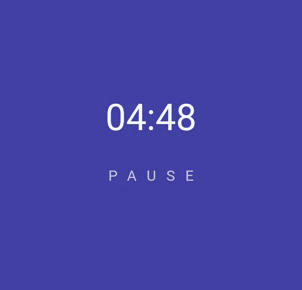


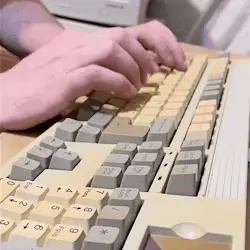

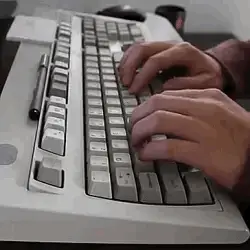

---
Working in the Library Stimboard (Featuring the Cuckoo Pomodoro Clock)
Made for: @fatherofmysteries
I loved making these, and making those little gifs. Great idea for the bottom left, I hope this lives up to your expectations. Pomodoro clock gifs sourced from here. Please credit if you use my gifs.
Credits: x x x | x x x | x x x

#gilear's creations#stimblr#stimboard#visual stim#stimmy#stim#gif#gifs#gif warning#library#academia#hands#irl hands#body stim#book#reading#books & libraries#cuckoo pomodoro#pomodoro#studying#university#paper#purple#white#black#grey#gray#keyboard#tech#laptop
11 notes
·
View notes
Text
Tools Tuesday - Fiber and Fabric Craft Support + What To Do During Breaks - April 15
Happy Tools Tuesday, everyone! Today’s topic is especially for all the yarn and fabric crafters participating and sharing their progress in the discord!
Just like with any other medium, it can be easy to get into the flow when working on a physical craft project, and totally lose track of time - only to reap the consequences of cramped muscles and aches. That’s why setting a timer can be a great strategy. There are many guides online about different work-break timer strategies; my personal favorite are these Pomodoro timers from How To ADHD, which have break timers built into the video (and no annoying clock sounds except when the timer is about to end)
(though I admit, I also have a habit of “timing” myself by watching episodes of a show, then forgetting to stretch in between!)
Figuring out what balance of time will depend on you, your mood, and your project. But sometimes, “taking a break” is too nebulous a concept. What could a break entail?
The annoyingly simple answer is: it varies! The long answer is figuring out what works for you.
I try to remember to check in with my body during a break and address basic needs I neglected while focused. Ask yourself:
Are you hungry?
Are you thirsty?
Do you need to use the bathroom?
Are there any physical aches?
Are you curled up oddly?
Do your eyes feel strained?
Addressing 1, 2, and 3 are simple but easily forgotten. For 4, I have shared a sheet on some common stretches previously, but there are a wealth of stretches, yoga poses, and exercises recommended for knitters, crocheters, and sewists.
As with any exercise, be aware of your body and mindful to not hurt yourself!
This video has some hand stretches not covered in previous posts here.
youtube
And here’s a full playlist of yoga moves put out by the yarn brand Lion Brand, aimed at knitters and crocheters. Many of the moves are designed to be done from a chair, so you don’t even have to get up if all you need to do during your break is stretch!
Many back stretches covered in that playlist also help with 5, posture. If you find you’re curling uncomfortably over your work, or that your hands regularly ache after crafting, perhaps it is your tools that need to step up their game. A little support can go a long way.
I often crochet with a pillow on my lap, to keep my hands up in a comfortable, relaxed position, and to keep me from leaning too far forward. A rolled up blanket or long plushie can do the same job. Ergonomic shaped needles and hooks can help if your hands cramp when working or you find you have to tightly grip the tools. Likewise, supportive gloves or wrist braces can aid when repetitive motions make your wrist ache. Better lighting or magnifiers make seeing stitches easier.
There should be no shame in using assistive devices! Do whatever you need to do to take care of yourself while you create!
For 6, eye strain, we can forget this can be an issue even when not working at a computer. The 20-20-20 idea (look at something 20ft away for 20 seconds after 20 minutes of close-up focus) goes for reading a book or doing crafts as well. Anything where you’re staring at something right in front of you for a long time can make your eyes ache. I really liked this video that goes over ways to mitigate eyestrain from a computer, as well as some exercises that I regularly do myself when I feel my eyes get sore.
youtube
Adding additional lighting can also help prevent eyestrain. If you find the light gives you a headache, try swapping the bulbs for something of a different color (warmer/cooler), or changing where the source sits. Sometimes I wear a visor when working with bright overhead shop lights.
As always, these tips are just my personal recommendations that you can use as starting off points for finding what works for you. Your breaks don’t need to be structured to be beneficial. Moving your body in a change of scenery to get a snack might be all you need. Or you could start a load of laundry and work while it’s going, which gives you a timer and a different physical task to do during your break when it’s ready to be hung/changed to the other machine.
Do whatever works for you, just please take care of yourself! We artists might suffer for our art, but creating art shouldn’t make you suffer.
Got any tips or resources? Or a tool that helped you craft more comfortably that you think others should know about? Share it in the comments or reblogs!
-
Tools Tuesday is a weekly part of the Finish What You Started event where I share various resources I have found to help everyone complete their WIP. Have a resource you want to share? Send it in a message and I’ll take a look!
13 notes
·
View notes
Text
Crafting a Transformative Healthy Daily Routine: Your Path to Wellness
In the hustle and bustle of modern life, it's easy to neglect our well-being while tending to various responsibilities. But adopting a healthy daily routine can have a profound impact on our physical, mental, and emotional well-being. Whether you're a student, a working professional, or someone seeking a more balanced life, here's a comprehensive guide to help you create a transformative healthy daily routine.
1. Rise and Shine with Intent: Morning Rituals The way you start your day sets the tone for the rest of it. Begin by waking up at a consistent time to regulate your body's internal clock. Engage in activities that promote mindfulness and positivity, such as meditation, deep breathing exercises, or journaling. Avoid immediately reaching for your phone or electronic devices to prevent a rush of information before you're mentally prepared.
2. Nourish Your Body: Balanced Breakfast Breakfast is often touted as the most important meal of the day, and for good reason. Fuel your body with a nutritious breakfast that includes a mix of complex carbohydrates, protein, and healthy fats. Opt for whole grains, fruits, yogurt, eggs, or smoothies to provide sustained energy throughout the morning.
3. Move and Groove: Physical Activity Incorporate exercise into your daily routine to boost your physical fitness and enhance your mood. Whether it's a brisk walk, a yoga session, or a full gym workout, find an activity you enjoy and make it a non-negotiable part of your day. Regular exercise improves cardiovascular health, increases metabolism, and releases endorphins, the "feel-good" hormones.
4. Structured Work (or Study) Time: Maintain Productivity For those with professional or academic commitments, structuring your work time is crucial. Break your day into focused work intervals, such as the Pomodoro technique (25 minutes of work followed by a 5-minute break). This approach enhances productivity while preventing burnout.
5. Mindful Consumption: Balanced Meals and Hydration Make conscious choices about what you eat and drink throughout the day. Consume a variety of nutrient-rich foods, including lean proteins, colorful vegetables, and healthy fats. Stay hydrated by drinking water regularly. Limit processed foods, sugary snacks, and excessive caffeine.
6. Mental Recharge: Short Breaks and Hobbies Intersperse your day with short breaks to relax your mind. Engage in hobbies you're passionate about, whether it's reading, playing a musical instrument, or practicing a craft. These moments of mental recharge enhance creativity and reduce stress.
7. Connect and Communicate: Social Interaction Human beings thrive on social connections. Dedicate time to interact with friends, family, or colleagues. Engaging in meaningful conversations or spending quality time with loved ones can uplift your spirits and provide emotional support.
8. Evening Wind-Down: Unplug and Relaxation As your day winds down, shift into relaxation mode. Limit screen time before bed to avoid the disruption of sleep-inducing hormones. Instead, read a book, take a warm bath, or practice gentle stretching. A calm evening routine sets the stage for a restful night's sleep.
9. Prioritize Sleep: Restorative Rest Sleep plays a pivotal role in overall health. Aim for 7-9 hours of quality sleep each night. Create a sleep-conducive environment by keeping your bedroom dark, quiet, and at a comfortable temperature. Establish a consistent sleep schedule to regulate your body's internal clock.
10. Reflection and Gratitude: Nighttime Journaling End your day by reflecting on your accomplishments and expressing gratitude. Write down a few things you're thankful for and acknowledge the progress you've made, no matter how small. This positive practice sets the tone for the next day.
Incorporating these elements into your daily routine takes time and commitment, but the benefits are worth the effort. A healthy daily routine can improve your physical health, enhance your mental well-being, and contribute to a more balanced and fulfilling life. Remember, it's not about perfection, but rather about progress and consistency on your journey to wellness.
#Healthy Lifestyle#Daily Routine#Wellness#Self-Care#Mindfulness#Balanced Living#Fitness#Nutrition#Productivity#Exercise#Mental Health#Positive Habits
99 notes
·
View notes
Text
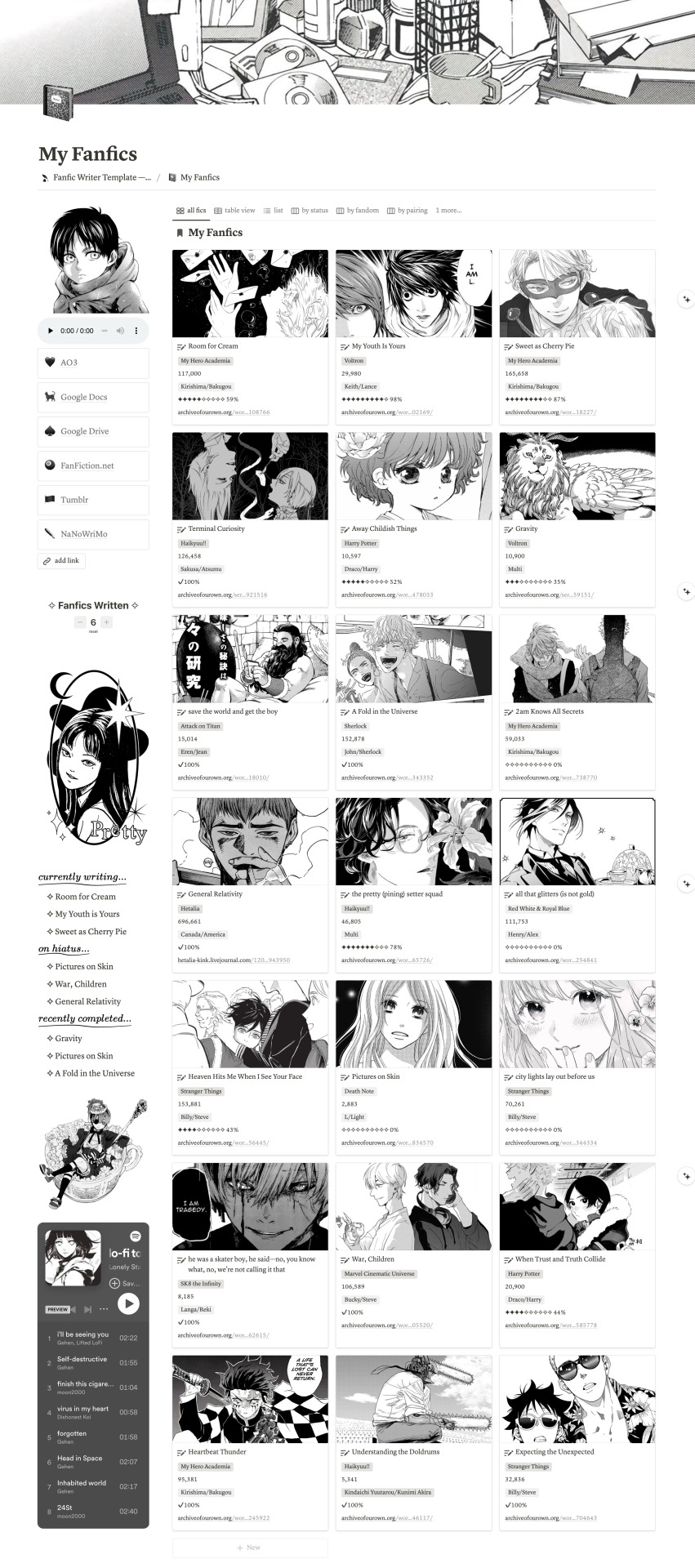
Fanfiction Writer Notion Template | Notion Template for Fanfic Writers | Writing Notion Template | Black and White Aesthetic Notion Template
♡ What You Get ♡ - Aesthetic Dashboard (Black and White Monochrome Theme) - Navigation - Digital Clock Widget - Links to AO3, Google Drive, and other fanfic websites - Spotify Playlist Widget - Quick Capture Buttons (add fanfics, brain dumps, and resources automatically) - Fanfiction Library (update your progress and sort fics by fandom, pairing, tags, etc) - Resources Page (I've added a few helpful links to resources already!) - Pomodoro Timer (for a focused, timed writing session) - Inspiration Page - Character Wiki - Calendar for Posting Schedule - To-Do List - Instructions for Use
Now available on my Ko-fi! :)
#fanfiction#notion#notion templates#ao3#fanfic writers#ao3 notion template#fanfiction resources#writing template#writing notion#writing notion template#fanfiction writing#fanfic writer workspace#writing workspace template#aesthetic notion dashboard#aesthetic notion template#aesthetic notion templates#black and white#manga#manga aesthetic
21 notes
·
View notes